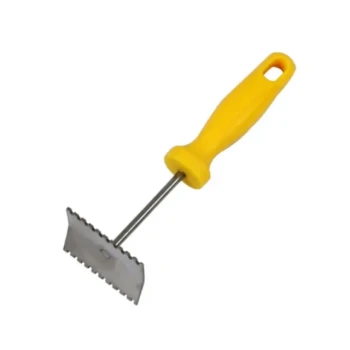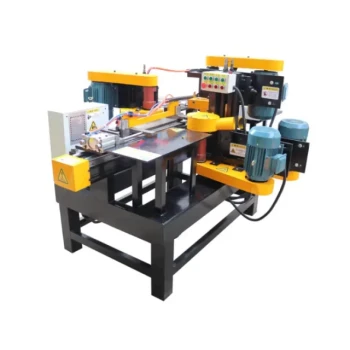Your apiary's location is the single most important factor determining your colony's nutritional needs and your management workload. A site rich in diverse, season-long forage allows bees to be self-sufficient, significantly reducing or even eliminating the need for you to provide supplemental pollen. Conversely, a poor location with inconsistent floral resources forces you into a role of active nutritional management to prevent colony decline.
Choosing an apiary site is not a matter of convenience; it is the foundational decision that dictates your entire pollen management strategy. Your location determines whether you act as a passive steward of a self-sustaining system or an active manager fighting nutritional deficits.

The Direct Link: Location and Natural Pollen Flow
The quality of your apiary site directly correlates to the availability of natural pollen, the primary protein source for bees. Understanding this link is the first step toward proactive beekeeping.
Why Continuous Bloom is Crucial
A single, massive bloom of one plant species provides a temporary feast, but it is not enough to sustain a colony for an entire season.
The ideal location offers a continuous and overlapping sequence of flowering plants from early spring through late autumn. This ensures the hive has a consistent protein income to support all its critical functions.
Assessing Floral Diversity in a Site
When scouting locations, look beyond a single field of flowers. A high-quality site includes a mix of trees, shrubs, and wildflowers that bloom at different times.
Early spring-blooming trees like maples and willows are vital for the initial population build-up. Mid-summer clovers and wildflowers sustain the colony during peak season, and late-season asters and goldenrod help the bees prepare for winter.
The "Feast or Famine" of Monocultures
Placing hives near large agricultural areas that practice monoculture (planting a single crop) creates a "feast or famine" scenario.
The bees may thrive for a few weeks while the crop is in bloom, but they face a sudden nutritional cliff once it's over. This often necessitates immediate and heavy supplemental feeding to prevent the colony from crashing.
How Pollen Demand Changes With the Seasons
A colony's need for pollen is not static; it fluctuates dramatically throughout the year. Your apiary's location must be able to meet these peak demands.
The Critical Spring Build-Up
In early spring, the queen dramatically increases her egg-laying rate to grow the colony's population. This explosion of new larvae (brood) creates an immense demand for pollen.
If a location cannot provide sufficient natural pollen during this critical phase, colony growth will be stunted, leading to a weaker hive that is less productive for the entire season.
Sustaining the Summer Workforce
Large bee populations are necessary to take advantage of summer nectar flows for honey production or to perform pollination services.
Maintaining this large workforce requires a steady pollen income. A pollen dearth in mid-summer, even if nectar is abundant, can cause the queen to reduce laying, leading to a population decline that hurts honey surplus.
Understanding the Trade-offs of Intervention
When a location is poor, intervention becomes necessary. However, every management action you take, from feeding supplements to harvesting pollen, comes with a trade-off.
The Cost of Supplemental Feeding
The most direct intervention is providing pollen patties or other supplements. This carries a clear financial cost for the materials and a time cost for the labor required to feed the hives.
While necessary in poor locations, it is a reactive and costly solution to a problem that can often be avoided with better site selection.
The Impact of Pollen Trapping on Honey Production
If you choose to harvest pollen yourself using a trap, you are creating a direct trade-off with honey production.
Bees will divert foragers from collecting nectar to collecting more pollen to compensate for what the trap removes. The references confirm that hives with active pollen traps typically produce less honey because the nectar-collecting workforce is reduced.
Natural Forage is Always Superior
While modern pollen supplements are good, they rarely match the complete nutritional profile of diverse, natural pollen. Natural forage provides a complex blend of amino acids, vitamins, and minerals that is optimal for bee health and resilience.
Making the Right Choice for Your Goal
Your ideal apiary site depends on your primary objective as a beekeeper. Use your goal to guide your location scouting.
- If your primary focus is maximizing honey production: Select a site with strong nectar sources and diverse, continuous pollen flow to support the massive workforce required for a large honey surplus.
- If your primary focus is minimizing cost and labor: Prioritize site selection above all else, finding a proven location with year-round floral diversity to make supplemental feeding unnecessary.
- If your primary focus is harvesting pollen: Choose an excellent location that can support the colony's own needs plus a surplus for you, and be prepared for a reduced honey yield as a direct consequence.
Ultimately, proactive site selection is the most powerful tool you have for ensuring healthy bees and achieving your beekeeping goals.
Summary Table:
| Apiary Location Factor | Impact on Pollen Needs | Management Implication |
|---|---|---|
| Rich, Diverse Forage | Low to None | Passive stewardship; minimal supplemental feeding |
| Poor, Monoculture Forage | High | Active nutritional management; frequent feeding required |
| Seasonal Feast/Famine | Variable, High Risk | Reactive feeding to prevent colony decline |
| Goal: Honey Production | High (to support workforce) | Prioritize sites with strong nectar AND pollen sources |
| Goal: Pollen Harvesting | Very High (surplus needed) | Accept trade-off of reduced honey yield |
Equip Your Apiary for Success with HONESTBEE
Your apiary's location sets the stage, but having the right equipment is key to effective management. Whether you're supporting a self-sufficient colony or need to intervene with supplemental feeding, HONESTBEE supplies the durable, reliable beekeeping supplies and equipment that commercial apiaries and distributors trust.
We help you:
- Maximize Efficiency: From feeders to hive tools, get gear built for the demands of commercial beekeeping.
- Support Colony Health: Source quality equipment that facilitates your nutritional management strategy, whatever your location.
- Achieve Your Goals: Whether your focus is honey production, pollination services, or pollen harvesting, we have the wholesale solutions you need.
Ready to strengthen your operation? Contact HONESTBEE today to discuss your specific needs and explore our wholesale-focused product lines.
Visual Guide

Related Products
- Professional Galvanized Hive Strap with Secure Locking Buckle for Beekeeping
- Professional Long-Handled Silicone Honey Scraper for Beekeeping
- Professional Wide Blade Honey Scraper for Beekeeping and Honey Processing
- Stainless Steel Scraper for Metal Queen Bee Excluders
- Stainless Steel Honey Press Wax Press with Tank
People Also Ask
- How can beekeepers secure the top cover of a hive? Protect Your Colony from Wind and Weather
- What are the types of Emlocks available? Choose the Right Strap for Hive Security
- Why are hive straps important for beekeepers? Secure Your Hives Against Wind, Predators & Transport
- What are the two styles of hive straps? Choose the Right Strap for Your Hive Security
- How should a cam buckle strap be installed for optimal performance? Master the Leverage for Maximum Tension



















